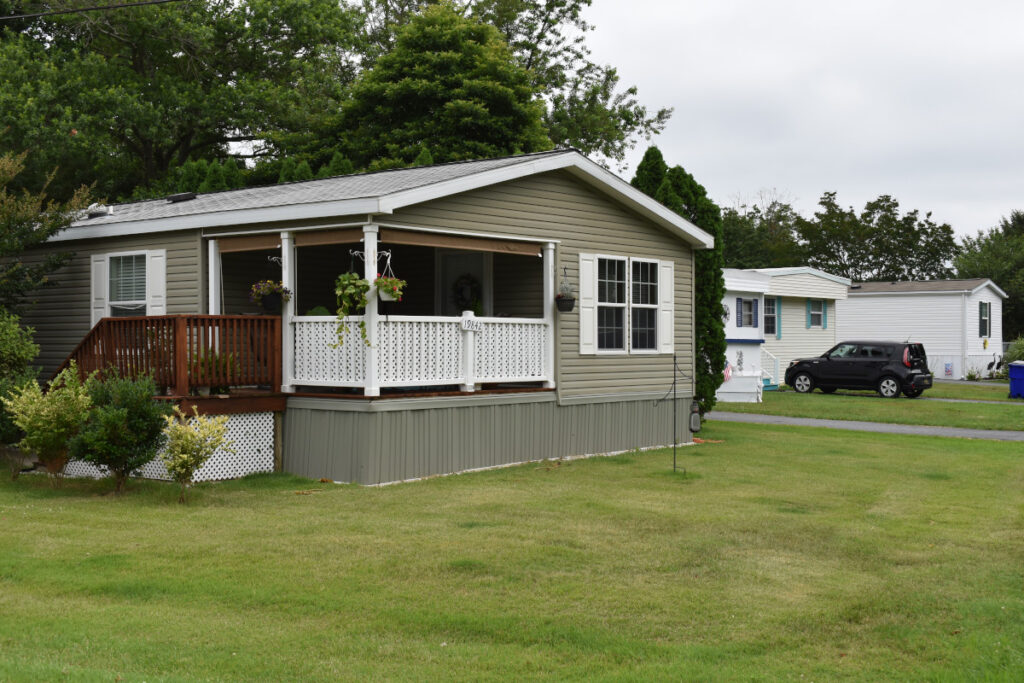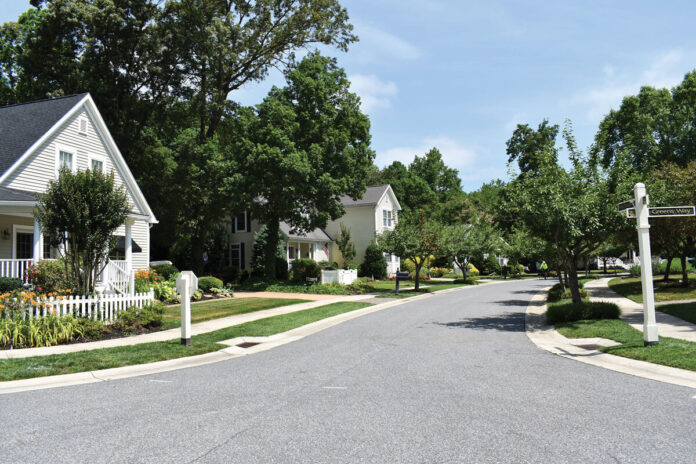A Look Back at the Most Important Topics in Manufactured Housing

Overall, the manufactured housing industry has had a good year in 2022. The level of new home production was up again and has plenty of room to climb. To say the industry, any industry, had good growth in 2022 is remarkable, as we will detail further in the sections to come.
Many employers have managed, somewhat surprisingly, to dodge and weave through the travails of the pandemic — lockdowns, illness, added health and safety regulations — and the labor market continues to rise from a slumber partially induced by obtuse government funding to would-be workers. Though hiring and training was a challenge in 2019 and continues to be, the labor market has righted itself enough to both buoy a tenuous economy and provide some amount of confidence for employers, especially in the manufactured housing industry, to be assertive and hire strategically for the long term.
That said, 2021 was a year that had its challenges. We will detail them from a general perspective, and provide some insight into how each challenge affected the manufactured housing industry specifically.
Inflation: From ‘Transitory’ to Entrenched
The hopeful talk of a “soft landing” died a quick death in the late summer. Year-over-year inflation rose above 9 percent mid-year and receded very mildly in August. Most analysts feel outsized inflation — pretty much anything more than 2 percent — will persist into the new year and 2024, though there is a minority pointing to the similarity of today’s trajectory with 1970s peak inflation, with the added benefits of the Feds’ recent historic measures to stave off inflation by raising rates, and cooling its activity in the bond market.
Admittedly, the reduction in late summer energy prices, including gasoline, helped level out inflation as fall was to settle in, before ticking up again on OPEC policy. Furthermore, critics are quick to point to the continued rise of core inflation as both the problem and the indicator of any significant progress. In the same month, inflation dropped 0.10 percent, energy, food, and shelter increased by 0.2 percent, and core inflationary (those excluding energy and food) marks rose 0.6 percent.
While we can acknowledge the benefits of lower energy and food prices, the “entrenched” nature of inflation today continues to keep many households up at night.
Economist KC Conway, in his presentation at the SECO Conference for Community Owners in October, noted that inflation pressure is difficult at home, and particularly daunting in the workplace.
“New construction is in a difficult spot with the anticipated cost overruns — maybe more than 32 percent in the next two years,” Conway said. “How do you plan a project and get a good loan with overruns?”

Interest Rates: The Levers that Manage Consumer Spending
What happens when the cost of goods shoot up as quickly as they did in 2022? Coming off a roaring economy in 2021, and again, overfed by government spiffs, there was a glut of money in the system, and a rabid consumer appetite despite the seemingly “transitory” supply chain disruptions that created scarcity and drove up prices. Yes, the U.S. economy was bound to see some level of inflationary pressure, and when it does the Federal Reserve steps in to raise interest rates. The expectation is that gradual rate hikes that make it harder to access money, for a home or capital upgrades for instance, would slow spending, cool the economy, and flatten inflation without dropping the economy into a recession. Easier said than done. Where the Fed usually steps in, the Fed in 2022 probably should have jumped in, or dove head first. It’s easy to see now, and the Fed’s subsequent actions — raising rates to the tune of 75 basis points at three consecutive meetings for the first time ever — have shown its own careful approach of early-year hikes at 25 or 50 basis points could have used more weight.
Increased interest rates across all sectors means less profit and reduced investment. While the manufactured housing industry has been noted as being “recession proof”, there is only so much pain property owners and investors want to feel. And while every business person’s objective is to make money, the industry is equally motivated by providing houses, increasing homeownership, and that certainly is a more difficult proposition when our homebuyers who require financing find it harder and more expensive yet.
Conway said he anticipates a 4.5 to 5 percent 10-year treasury rate by mid-2024, and a 30-year mortgage at 8 percent.
He was critical of the Fed, saying the late, aggressive rate hikes are a blunt instrument for a problem that could have been better handled by sharpening a pencil and managing expenses, as he advised manufactured housing industry operators to do.
“The Fed should be encouraging the banks to lend,” Conway said. “But they’re discouraging lending.”
Lending in a New Market
We just covered increased interest rates, so the next obvious topic is finance and lending. Every home or community transaction gets more expensive under the specter of increased rates. The obvious bit of relief here is that the increased interest rates induced by the Federal Reserve have an equal impact on everyone. The price of buying any home in any neighborhood increased on scale, so the manufactured home continues to meet the same market need and can expect a somewhat similar market performance. The real story when it comes to lending for manufactured housing has less to do with increased rates than it does with general acceptance and availability of financing for manufactured homes, including a more robust secondary market where chattel loans are regarding in the same light at the conventional mortgage. Fannie Mae and Freddie Mac, for instance, have helped the industry with plenty of secured financing for communities — commercial real estate transactions — but have yet to embrace securitization for homes as personal property.
The Labor Market
The labor market is a two -sided coin. As mentioned earlier, it is strong enough to help buoy the economy against recession, gaining 263,000 non-farm payroll jobs in September, but remains vexing to employers who need to hire efficiently, effectively, and with confidence the plan will retain and grow talent.
So how is the labor market both good and bad? Well, in the fourth quarter, the labor market could be described as well balanced if not robust. Unemployment dipped to a satisfactory 3.5 percent. The difficulty is that the participation has been low and remains so. That is to say, there is a job for nearly everyone who wants a job, but there are still too many people who don’t want a job. That’s a cocktail of matters. Firstly, the middle of the labor force remains in a pandemic hangover. Younger workers and lower earners have had more cash on hand than ever, and even though most benefits have ended, some of the reserves remain. There are fewer retail, hospitality, and restaurant jobs both because there are fewer businesses in those sectors, and because fewer workers are interested in those positions.
“Restaurant, hospitality, retail workforce said we’re done,” Conway noted. “They’re going to get one of those remote jobs. If I were you, I’d think about building in home offices and getting some really good internet.”
Materials
The ability to reliably order materials at a reasonable cost for manufacturing or otherwise has been on shaky ground since the onset of the pandemic. There has been some softening with borders re-opening and trade regulating, but sourcing lumber, chips for electronics, windows, and all variety of tapes and plastics continues to be impossible at times and often costly and time-consuming. Unfortunately, any relief from supply chain solutions is being eroded by inflation throughout the economy.
Consolidation
The top operators in the business — whether in communities, homebuilding, or the service/supply sector — continue to be aggressive in growth through acquisition. In each edition of MHInsider, in The Happenings section, we detail a lengthy list of transactions, individual communities or small portfolios being acquired by the larger, national operators. Likewise, builders continue to fill out their offerings or shore up their presence by buying existing companies, most often continuing under the proven brand and market approach. While we’ve seen the headlines of million-dollar deals, there is plenty more opportunity for consolidation. The “industry is aging” is a conversation that often arises. Attention is being paid, and efforts are being made to ensure that vital resources — like haulers and set teams — continue in the marketplace under new leadership and ownership as necessary. For every seller there is the right buyer.
Expansion
The industry is expanding in every way. Builders are opening plants that haven’t seen homebuilding activity in decades, organizations throughout manufactured housing are investing in their teams, and community operators are following through on thoughtfully planning how new homes will be brought in on that adjacent land. Lenders are coming back to the industry as well, offering a variety of new programs and products for homebuyers and community operators. The ADU business is expanding as new states and municipalities on an increasingly regular basis are allowing the backyard or adjacent “cottages”. New HUD Code homes on a permanent foundation with a garage or porch, higher roof pitch, and interior energy and efficiency requirements now qualify for conventional mortgages. The CrossMod homes in a neighborhood setting are an emerging solution for many developers and buyers looking to the middle market. As manufactured housing professionals, the real measure of expansion we all want to see is in the percentage of national home starts, where we’ve been hovering around 10 percent for far too long, and need to grow toward 15 to 20 percent.
MHInsider is the leader in manufactured housing news, and is a product of MHVillage, the largest marketplace for manufactured homes.










